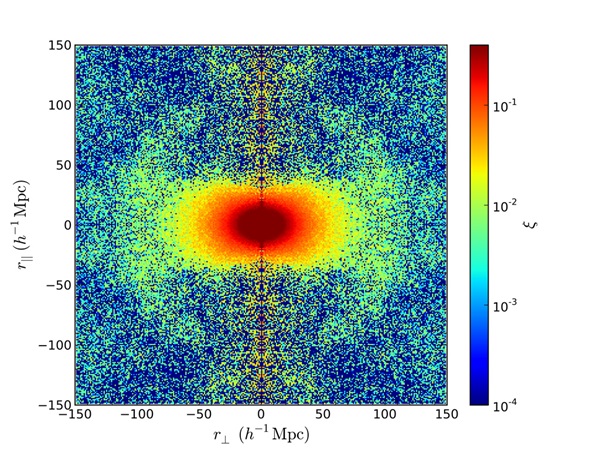Key Takeaways:
Lado Samushia from the University of Portsmouth and his colleagues analyzed more than 600,000 galaxies from the Sloan Digital Sky Survey III (SDSS-III) Baryon Oscillation Spectroscopic Survey (BOSS) catalog to come up with a measurement of how much galaxies clump together within the vast volume that they occupy.
“Whilst the cosmological principle tells us that the universe should have same properties in every direction, observations do not match this picture,” said Samushia. “Because galaxies are themselves part of larger structures that are growing, they tend to ‘infall’ towards each other. This infall gives an apparent effect that we only see in the direction toward us because of the way in which we observe the galaxies.”
Using the observed distortions in galaxy positions, the team was able to measure the strength of gravity with a precision of 6 percent, the strongest constraint of its kind as of today. The measurements turned out to be perfectly consistent with the predictions of Einstein’s general relativity theory.
“Gravity is the main driving force behind the growth of structure in the universe. According to general relativity, gravity is a manifestation of the space-time curvature — massive objects curve the space-time around them, which affects the movement of other objects around them. It’s a very elegant theory that has been successful in explaining the outcomes of many experiments, however it is not the only theory of gravity,” said Samushia. “Theoretical physicists have proposed many alternative theories and modifications of general relativity and the challenge for observational physicists is to test the alternative theories with ever increasing precision.”










